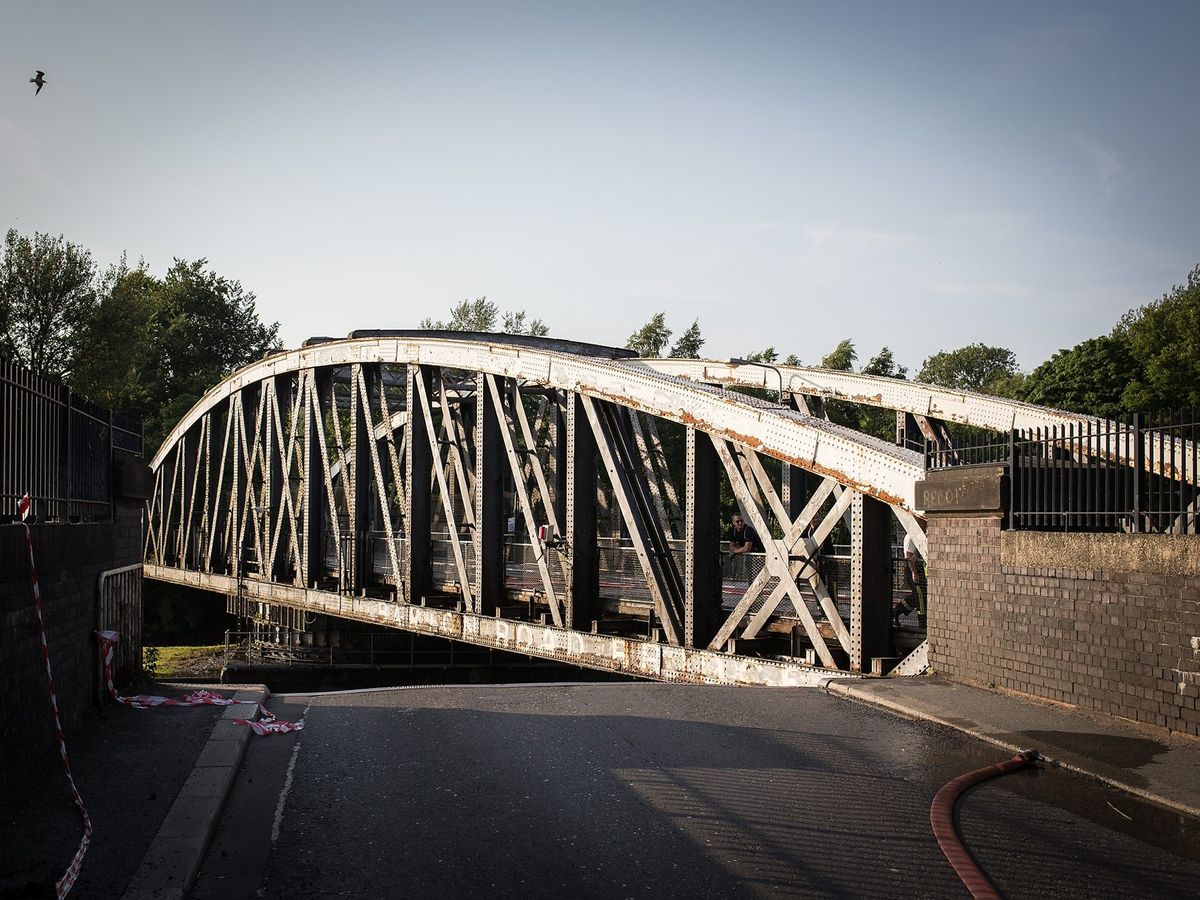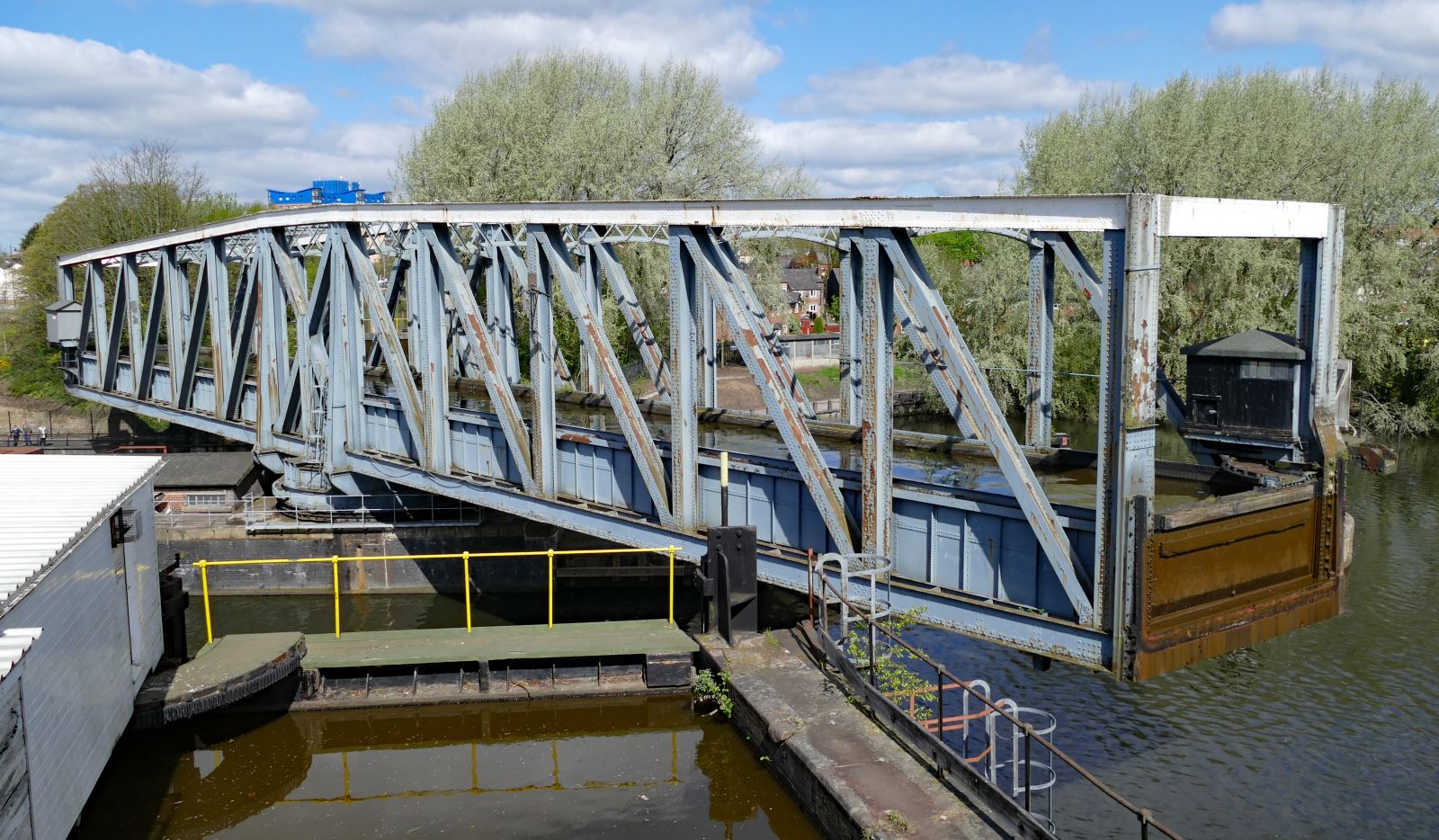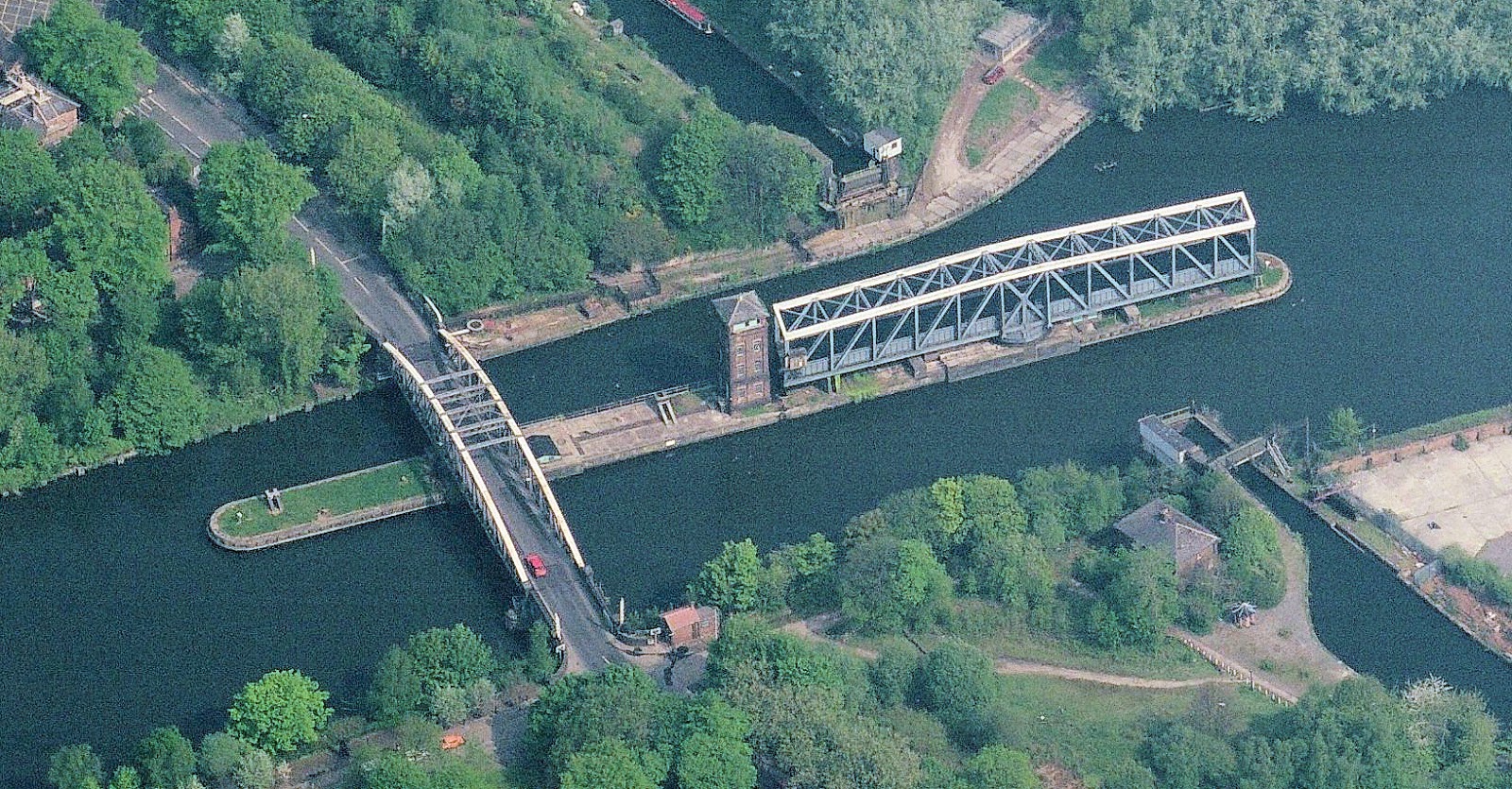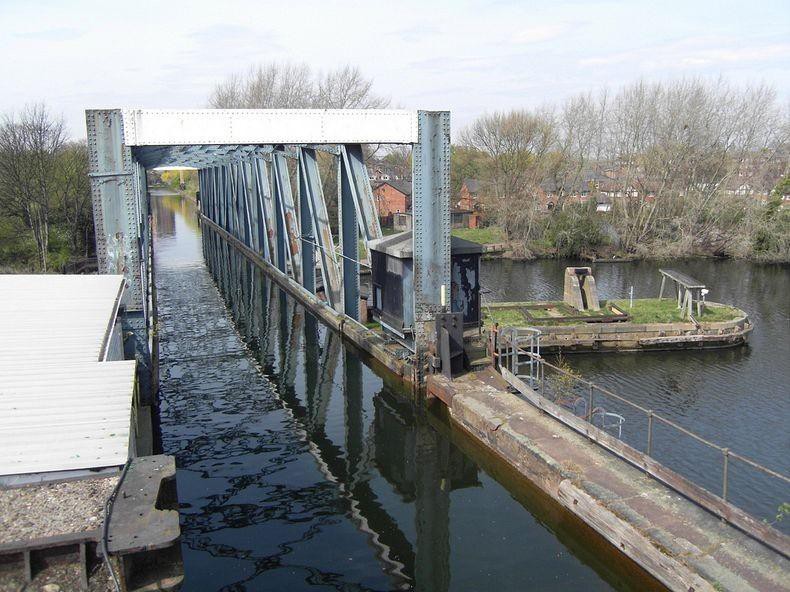The Barton Swing Aqueduct is a moveable navigable aqueduct in Barton upon Irwell, Greater Manchester, England. It carries the Bridgewater Canal across the Manchester Ship Canal. The swinging action allows large vessels using the ship canal to pass underneath and smaller craft, both narrowboats and broad-beam barges to cross over the top.

The aqueduct, the first and only swing aqueduct in the world, is a Grade II* listed building, and considered a major feat of Victorian civil engineering. Designed by Sir Edward Leader Williams and built by Andrew Handyside and Company of Derby, the swing bridge opened in 1894 and remains in regular use.

Construction work began in 1890, with the demolition of a Roman Catholic school on the south bank of the ship canal. The scale of the operation meant that the course of the River Irwell had to be temporarily diverted around the site, so that the central island could be built on dry land.

The aqueduct is a form of swing bridge. When closed, it allows canal traffic to pass along the Bridgewater Canal. When large vessels need to pass along the ship canal underneath, the 1,450-tonne (1,430-long-ton; 1,600-short-ton) and 330-foot (100 m) long, iron trough is rotated 90 degrees on a pivot mounted on a small purpose-built island.

Gates at each end of the trough retain around 800 tonnes of water; additional gates on each bank retain water in their adjacent stretches of canal.

The structure is adjacent to, and upstream of, the Barton Road Swing Bridge. Both bridges are operated from a brick control tower on an island in the centre of the ship canal.

When in the open position, the aqueduct and road bridge line up along the length of the island, allowing ships to traverse each side. To avoid the risk of collision, the aqueduct is opened half an hour before traffic on the Manchester Ship Canal is scheduled to pass.
According to en.wikipedia











